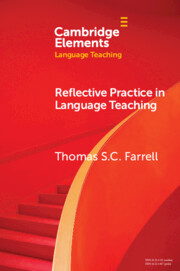Refine search
Actions for selected content:
4 results
Chapter 11 - Diverse learners, pedagogy and the Arts
- from Part 3 - How: Embedding the Arts in education
-
- Book:
- Teaching the Arts
- Published online:
- 28 July 2025
- Print publication:
- 06 August 2025, pp 332-362
-
- Chapter
- Export citation
Chapter 1 - The multilingual world of teachers and students
- from Part 1 - Why does linguistic diversity matter?
-
- Book:
- Teaching for Linguistic Diversity in Schools
- Published online:
- 25 October 2024
- Print publication:
- 27 June 2024, pp 13-24
-
- Chapter
- Export citation
Chapter 2 - Why teaching for linguistic diversity matters to student wellbeing and achievement
- from Part 1 - Why does linguistic diversity matter?
-
- Book:
- Teaching for Linguistic Diversity in Schools
- Published online:
- 25 October 2024
- Print publication:
- 27 June 2024, pp 25-40
-
- Chapter
- Export citation

Reflective Practice in Language Teaching
-
- Published online:
- 22 April 2022
- Print publication:
- 19 May 2022
-
- Element
- Export citation
